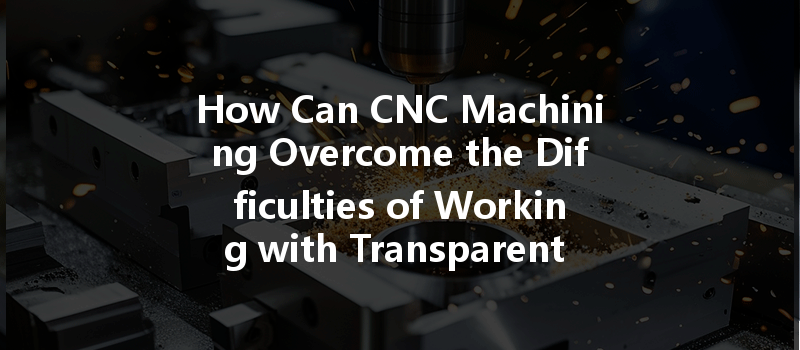Did you know that the transparency of polycarbonate (PC) can rival that of glass, while also being nearly 200 times more impact resistant? This amazing combination of properties makes PC and acrylic (PMMA) popular choices in industries such as optics, automotive, and consumer goods. However, when it comes to CNC machining these materials, manufacturers often encounter unique challenges that require specialized knowledge and techniques. In this blog, we will explore the intricate aspects of CNC machining of transparent PC and PMMA, detailing how to overcome these challenges effectively.
Understanding Transparent PC and PMMA
Characteristics of Transparent PC and PMMA
Both PC and PMMA are thermoplastic polymers that offer exceptional clarity and strength.
Polycarbonate (PC):
Acrylic (PMMA):
Understanding these properties is vital for manufacturers when selecting the appropriate material for their projects. However, while these materials boast numerous benefits, they also present significant machining difficulties that need to be addressed.
Common Challenges in Machining PC and PMMA
Both PC and PMMA are sensitive to heat, which can cause warping or melting during the machining process. This phenomenon, often referred to as “thermal deformation,” can lead to dimensional inaccuracies and undesirable surface finishes.
Achieving a high-quality surface finish is critical in industries that utilize transparent materials. Scratches, tool marks, and other defects can severely impair the aesthetic quality of the final product.
Due to their brittleness, both PC and PMMA are prone to chipping or cracking if not handled properly. This can occur during cutting, drilling, or milling.
The abrasive nature of these materials can lead to increased tool wear, resulting in elevated production costs and time spent on tool changes.
Transparent plastics can accumulate static electricity, attracting dust and other contaminants that can affect the quality of the machined components.
Techniques to Overcome CNC Machining Difficulties
Choosing the right cutting tools is fundamental to successful CNC machining of PC and PMMA. It’s advisable to use tools specifically designed for plastic machining. Here are a few recommendations:

Optimizing the cutting parameters significantly affects the machining quality of PC and PMMA. The following factors should be considered:
Speed and Feed Rate
Cooling Techniques
Securing the part during machining is crucial to avoid movement that can lead to inaccuracies. Here are some best practices for fixturing:
Achieving a clear, aesthetic finish is a priority in many applications. Here are some strategies:
To minimize the risk of chipping or cracking:
Technical Implementation of Solutions
To implement the above techniques effectively, it’s essential to conduct experimentation and adjust based on the specific machine and material used. Regular training and upgrades for operators in CNC machining of plastics will ensure that they are equipped with the latest skills and knowledge.
In conclusion, while machining transparent PC and acrylic (PMMA) presents unique challenges, a methodical approach can yield high-quality results. By selecting the appropriate tools, optimizing cutting conditions, employing effective fixturing strategies, and minimizing the potential for defects, manufacturers can achieve impressive outcomes.
The importance of this blog lies in its focus on practical solutions that can be readily applied in any CNC machining operation. By understanding and addressing the difficulties associated with these materials, you not only improve the quality of your products but also enhance profitability and customer satisfaction.
Machining transparent materials is a journey, and knowledge is the best tool in navigating through its intricacies. If you’re in the field, take this information, carefully implement these strategies, and watch how they revolutionize your process. Your ability to master these techniques will distinguish your products in the market, making them not only functional but also aesthetically pleasing.
—






